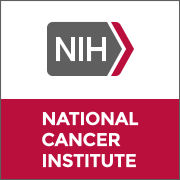预约演示
更新于:2025-05-07
Distal Bile Duct Adenocarcinoma
远端胆管腺癌
更新于:2025-05-07
基本信息
别名 Adenocarcinoma of the Distal Common Bile Duct、Distal Bile Duct Adenocarcinoma、Distal Cholangiocarcinoma |
简介 An adenocarcinoma that arises from the common bile duct distal to the insertion of the cystic duct. |
关联
1
项与 远端胆管腺癌 相关的药物靶点 |
作用机制 CD27抑制剂 |
最高研发阶段临床2期 |
首次获批国家/地区- |
首次获批日期1800-01-20 |
31
项与 远端胆管腺癌 相关的临床试验NCT06923475
Neoadjuvant Gemcitabine and Cisplatin in Combination With Perioperative Pembrolizumab Versus Upfront Surgery for Patients With Primary Resectable and Borderline Resectable Perihilar and Distal Cholangiocarcinoma (NEODISCO): A Multicentre Phase 2B/3 Randomized Controlled Trial
Extrahepatic cholangiocarcinoma (eCCA) is a rare and aggressive cancer with poor prognosis. ECCA can be further subcategorised in perihilar and distal cholangiocarcinoma (pCCA and dCCA). Surgical resection is the only potential cure, but only one-third of patients are eligible. Even among those deemed resectable, a significant portion (≈30%) experience disease progression before surgery, while another 30% are found unresectable during exploration. High recurrence rates and postoperative complications further limit survival, with 5-year overall survival ranging from 13% (R1 resection) to 40% (R0 resection). Given the long preoperative work-up period and lack of treatment during this phase, a neoadjuvant approach may improve outcomes by increasing R0 resections, reducing recurrence, and optimizing patient selection.
This multicenter, randomized phase 2B/3 trial aims to assess whether neoadjuvant gemcitabine and cisplatin plus perioperative pembrolizumab improves event-free survival in patients with resectable and borderline resectable pCCA and dCCA.
This multicenter, randomized phase 2B/3 trial aims to assess whether neoadjuvant gemcitabine and cisplatin plus perioperative pembrolizumab improves event-free survival in patients with resectable and borderline resectable pCCA and dCCA.
开始日期2025-05-05 |
申办/合作机构 |
NCT06801899
ToPanc Trial: Survival After Total Versus Partial Pancreaticoduodenectomy for Adenocarcinoma of the Pancreatic Head, Distal Cholangiocarcinoma, and Ampullary Cancer: a Multi-centric Randomized Controlled Trial
The goal of this clinical trial is to learn if total removal of the pancreas is a preferable alternative to partial removal in patients with cancer of the pancreatic head who are at high risk of pancreatic leakage. The main question it aims to answer is:
Does total pancreas removal improve survival without reducing quality of life compared to partial removal?
The only study specific procedures are the collection of 2 blood samples (7.5ml for each time point, preoperatively and during the hospitalisation) and the completion of the questionnaires.
Does total pancreas removal improve survival without reducing quality of life compared to partial removal?
The only study specific procedures are the collection of 2 blood samples (7.5ml for each time point, preoperatively and during the hospitalisation) and the completion of the questionnaires.
开始日期2025-05-01 |
申办/合作机构 |
NCT06685289
Donafenib Combined With Capecitabine for Postoperative Adjuvant Therapy of Biliary Malignant Tumors With High-risk Recurrence Risk: a Multi-center, Randomized Controlled, Phase II Study
This study is a randomized, open label, parallel controlled trial aimed at evaluating and observing the efficacy and safety of the combination of donafenib and capecitabine as adjuvant therapy for postoperative treatment of biliary malignancies with high risk of recurrence.
The study selected patients with biliary malignant tumors who are at high risk of postoperative recurrence as the research subjects.
After the subjects sign the informed consent and pass the screening, they will be randomly divided into 1:1 groups. The experimental group consisted of Donafenib (200mg, bid) combined with capecitabine (1250mg/m2, bid, treated for 2 weeks and stopped for 1 week). The control group was capecitabine (1250mg/m2, bid, treated for 2 weeks and stopped for 1 week). Stop treatment until the subject experiences disease recurrence or intolerable toxic side effects.
The primary endpoint of the study was the 1y RFS rate. Plan to include 70 participants.
The study selected patients with biliary malignant tumors who are at high risk of postoperative recurrence as the research subjects.
After the subjects sign the informed consent and pass the screening, they will be randomly divided into 1:1 groups. The experimental group consisted of Donafenib (200mg, bid) combined with capecitabine (1250mg/m2, bid, treated for 2 weeks and stopped for 1 week). The control group was capecitabine (1250mg/m2, bid, treated for 2 weeks and stopped for 1 week). Stop treatment until the subject experiences disease recurrence or intolerable toxic side effects.
The primary endpoint of the study was the 1y RFS rate. Plan to include 70 participants.
开始日期2024-11-15 |
申办/合作机构 |
100 项与 远端胆管腺癌 相关的临床结果
登录后查看更多信息
100 项与 远端胆管腺癌 相关的转化医学
登录后查看更多信息
0 项与 远端胆管腺癌 相关的专利(医药)
登录后查看更多信息
696
项与 远端胆管腺癌 相关的文献(医药)2025-05-01·European Journal of Gastroenterology & Hepatology
Distinct composition and metabolic potential of biliary microbiota in patients with malignant bile duct obstruction
Article
作者: Cai, Xiaodi ; Dai, Chenguang ; Ye, Jianxin ; Qian, Lijuan ; Zou, Zigui ; Zhou, Jikai ; Luan, Fujuan ; Wang, Limei ; Zhu, Dongming
2025-04-03·Scandinavian Journal of Gastroenterology
Evaluation of the validity of pancreatoduodenectomy for octogenarian patients with biliary tract carcinoma from the perspective of recurrence
Article
作者: Kawaguchi, Yoshihiko ; Amemiya, Hidetake ; Ichikawa, Daisuke ; Shoda, Katsutoshi ; Higuchi, Yudai ; Izumo, Wataru ; Maruyama, Suguru ; Nakata, Yuuki ; Kawaida, Hiromichi ; Saito, Ryo ; Nakayama, Takashi ; Shiraishi, Kensuke ; Furuya, Shinji ; Takiguchi, Koichi
2025-04-01·Clinical Journal of Gastroenterology
Pathological complete response after chemotherapy in initially unresectable distal cholangiocarcinoma
Article
作者: Takagi, Masayuki ; Hayakawa, Tomoaki ; Nakayama, Toshihiro ; Matsushita, Reika ; Takagi, Shimpei ; Matsushita, Tsunehisa ; Tanaka, Yuya ; Sumi, Yasuhiro ; Nakano, Hiroshi ; Ozaki, Takahiro
分析
对领域进行一次全面的分析。
登录
或

Eureka LS:
全新生物医药AI Agent 覆盖科研全链路,让突破性发现快人一步
立即开始免费试用!
智慧芽新药情报库是智慧芽专为生命科学人士构建的基于AI的创新药情报平台,助您全方位提升您的研发与决策效率。
立即开始数据试用!
智慧芽新药库数据也通过智慧芽数据服务平台,以API或者数据包形式对外开放,助您更加充分利用智慧芽新药情报信息。
生物序列数据库
生物药研发创新
免费使用
化学结构数据库
小分子化药研发创新
免费使用



